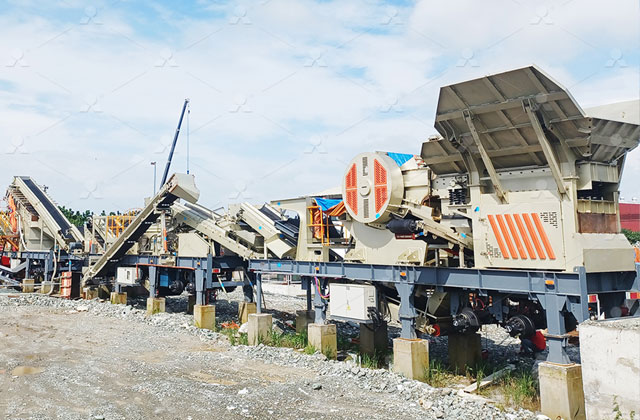Choosing the right configuration for a mobile crushing plant involves several factors that need to be considered to ensure that the plant meets your production requirements, works efficiently, and provides the best value for your investment. Here are the key considerations for selecting a mobile crushing plant configuration:

1. Material Characteristics
Understanding the properties of the material you will be processing is crucial. This includes:
- Hardness: Softer materials might require different types of crushers than harder materials.
- Abrasiveness: Highly abrasive materials can wear down equipment quickly, requiring more robust and wear-resistant components.
- Moisture Content: Wet materials can cause clogging and need special handling equipment.
- Size and Shape: The initial size and shape of the material will determine the type and configuration of the crushing plant.
2. Production Requirements
Define your production goals:
- Capacity: Determine the volume of material you need to process per hour/day. This will influence the size and number of crushers and screens.
- Output Size: Specify the desired size and shape of the finished product. Different crushers and configurations can produce various sizes and shapes.
- Quality Requirements: Some applications require higher-quality aggregates with specific characteristics.
3. Type of Crushers
Choose the appropriate type of crusher(s) based on the material and production requirements:
- Jaw Crushers: Suitable for primary crushing of hard and abrasive materials. They provide a high reduction ratio and can handle large feed sizes.
- Impact Crushers: Ideal for softer materials and for producing a uniform particle shape. They are often used for secondary or tertiary crushing.
- Cone Crushers: Used for secondary, tertiary, or quaternary crushing stages, especially for hard materials. They provide high productivity and a high reduction ratio.
- Hammer Crushers: Suitable for softer materials and can produce fine aggregates.
4. Screening and Washing
Consider the need for screening and washing units:
- Screens: Necessary for separating materials into different size fractions. Consider the number and size of decks based on your needs.
- Washing Systems: Required if your material has a high clay or dirt content. This will ensure a clean final product.
5. Mobility and Transport
- Chassis Type: Choose between a wheeled or tracked chassis. Tracked plants are more mobile and can be moved easily around the site, while wheeled plants are generally more suitable for long-term projects.
- Transport Regulations: Ensure the plant complies with local transport regulations regarding size, weight, and roadworthiness.
6. Automation and Control Systems
- Automation: Modern plants come with advanced control systems that allow for automation of various processes, increasing efficiency and reducing the need for manual intervention.
- Remote Monitoring: Some systems offer remote monitoring capabilities, providing real-time data on performance and maintenance needs.
8. Maintenance and Support
- Ease of Maintenance: Consider the ease of accessing components for maintenance and repairs.
- Availability of Parts: Ensure that spare parts are readily available to minimize downtime.
- Support Services: Choose a manufacturer or supplier that provides good technical support and service.
Choosing the right mobile crushing plant configuration involves a comprehensive assessment of material characteristics, production requirements, site conditions, and budget constraints. By carefully considering these factors and consulting with experts, you can select a configuration that maximizes productivity, efficiency, and cost-effectiveness for your specific application.
